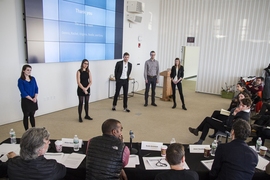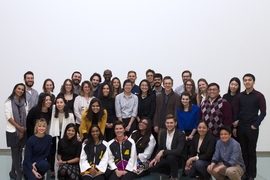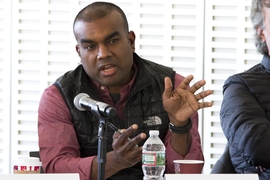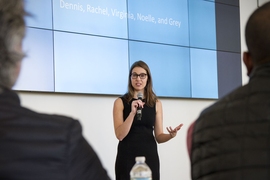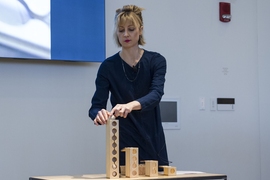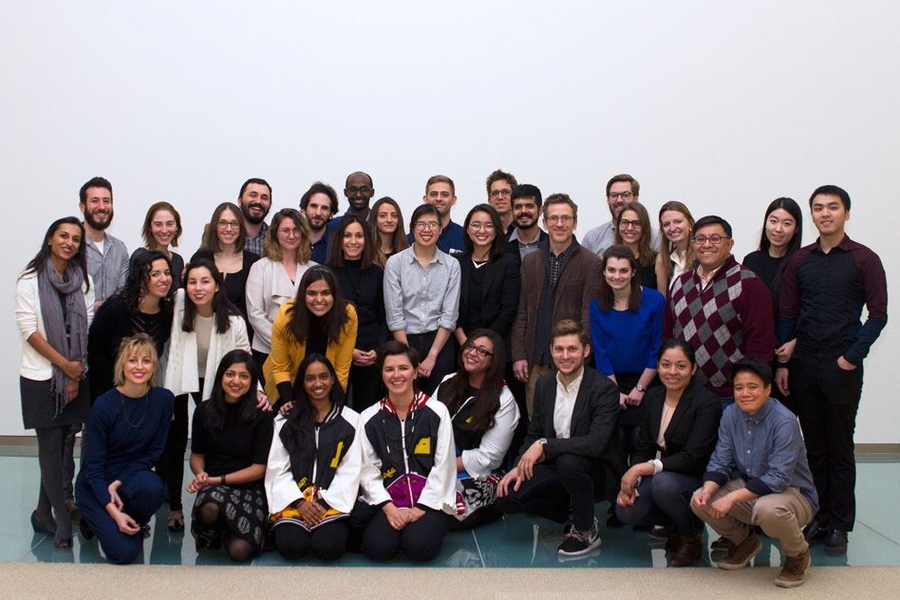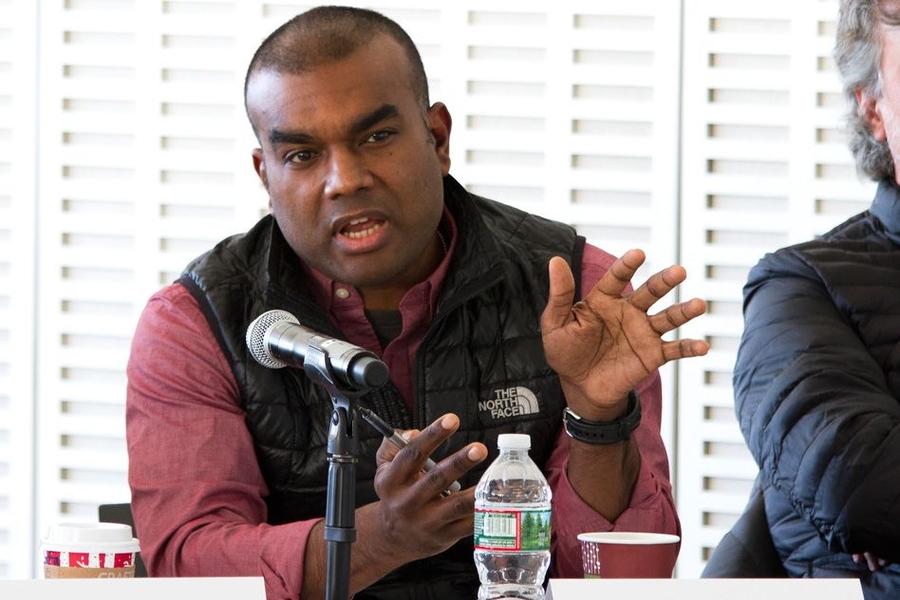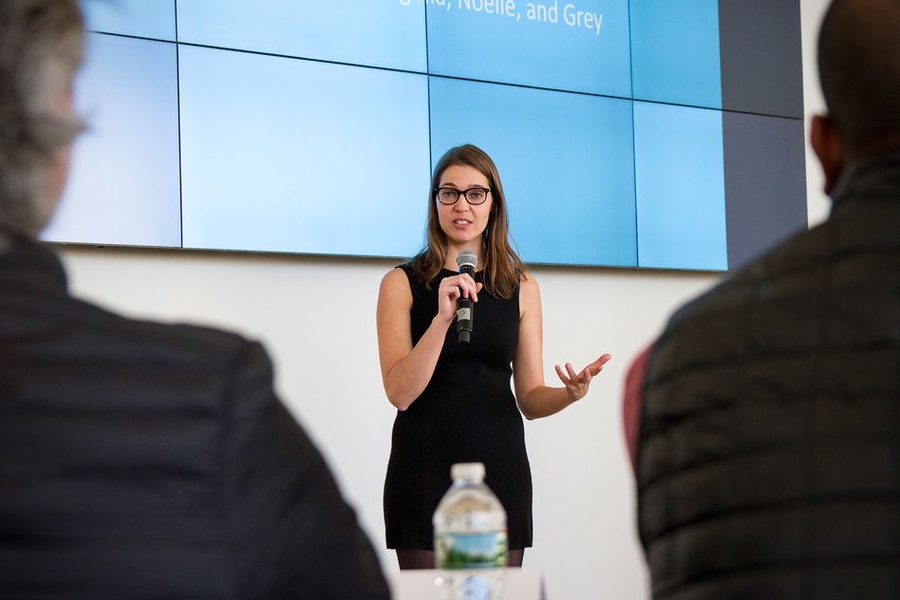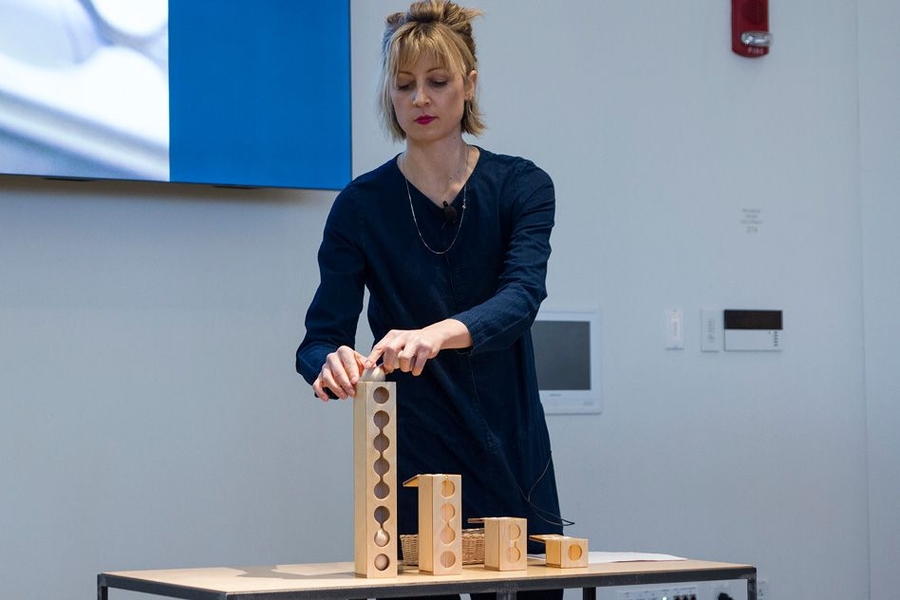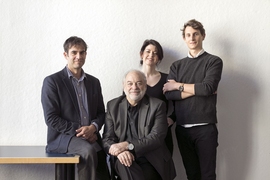Eight student-led teams hoping to launch ventures ranging from real estate development, to urban diagnostics, to novel design solutions for schoolchildren have been selected as the inaugural cohort for DesignX, the new entrepreneurship accelerator from MIT’s School of Architecture and Planning (SA+P).
Fifteen teams gathered at the MIT Media Lab on Saturday to present their ideas to a selection panel drawn largely from outside MIT. The teams included students, faculty, and alumni from every unit of SA+P, joined by others specializing in engineering, business, and computer science.
Of these, eight teams were chosen to participate in DesignX, which will provide support via targeted courses, external mentorship, $15,000 in equity-free seed funding, and a robust network to help students take their ideas in the areas of architecture, planning, art, media, and real estate from the studio to the marketplace.
All pitches made problem-solving the basis for developing new products and businesses. The selected teams are:
Bitsence uses a small sensor to monitor human movement and behavior in physical space, delivering insights about activity over time to help improve cities, architecture, and real estate developments.
Equity is modeling a resident-driven development marketplace that matches occupants, designers, builders, and financers of real estate developments. It will link housing design with finance and match occupants with development suppliers.
Hosta is an application that turns pictures and videos of living spaces into a 3-D-model-powered home management platform for simplifying the home renovation process.
Kumej is a light, collapsible seat designed to enable underprivileged students in India to carry and create their own comfortable work surface, whether at a construction site where their parents work or in a rural school.
Learning Beautiful creates tactile, Montessori-inspired learning materials to teach computer science to young children, without the use of computer screens.
Nesterly is a platform to connect people who have extra space in their homes to host long-term renters at affordable rates in exchange for help around the house.
Urban Diagnostics is mining city sewers using DNA sequencing and metabolomics, building a global data analytics platform to map the health and wellbeing of our cities.
Virtual Collaboration Research is developing Mediate, an artificial-intelligence-supported, speech-driven spatial markup tool for virtual reality, enabling designers and architects to work collaboratively inside virtual reality.
“DesignX is quickly ramping up to become an essential building block for design entrepreneurship at MIT and for injecting design ideas into the Kendall Square innovation ecosystem,” said Hashim Sarkis, dean of the School of Architecture and Planning. “We are delighted with the range of fields represented from around MIT, as well as the quality of the proposals.”
Twenty-nine teams from many disciplines applied to enter the accelerator, seeking to solve problems in the design of cities, housing, public space, education, and health. Fifteen teams advanced to the second round to pitch to the selection board. Teams could include students, faculty, or researchers from across MIT but were required to have at least one member from SA+P.
The judges, all experienced entrepreneurs, selected the eight teams whose presentations were most compelling. The participants were judged on the strengths of their problem, proposed solution, likely market, and team, but also on their projects’ “impact on design and the built environment.”
DesignX is the first entrepreneurial accelerator within a school of architecture and planning to develop ventures while participants are still students.
“Many new ideas emerge from classes and studios but are lost after the students graduate,” says Dennis Frenchman, the Class of 1922 Professor of Urban Design and Planning and faculty director of DesignX. “We established DesignX to create a path for students of architecture, planning, media, real estate, and art to take their innovative ideas and turn them into reality.”
Despite the strong and growing entrepreneurial ecosystem at MIT and in Boston, says Frenchman, an important area was being given insufficient attention: design, cities, and the built environment.
“Housing, infrastructure, and education affect us all, and they are often underserved by innovation,” said Gilad Rosenzweig, executive director of DesignX. “We are not only serving the demand of our community of aspiring entrepreneurs, but also addressing critical needs of cities, society, and industry by helping launch new companies focused on these pressing issues.”
The eight winning teams will start work in just over a month, at a two-week boot camp during MIT’s Independent Activities Period (IAP) in January. The training will encompass business fundamentals, successful team dynamics, and the elements of design thinking, in preparation for a full spring course in which the teams will develop their business plans through a tailored entrepreneurial curriculum.
“Pitching my ideas felt like the first step in understanding the reality of moving forward with entrepreneurship beyond my time at MIT,” says Learning Beautiful’s Kimberly Smith, a graduate student in the Social Computing Group at the MIT Media Lab. “Design is what makes our technology effective for the people who need it. Considering our work through this lens is important because good design creates the connection between our ideas and the world.”
